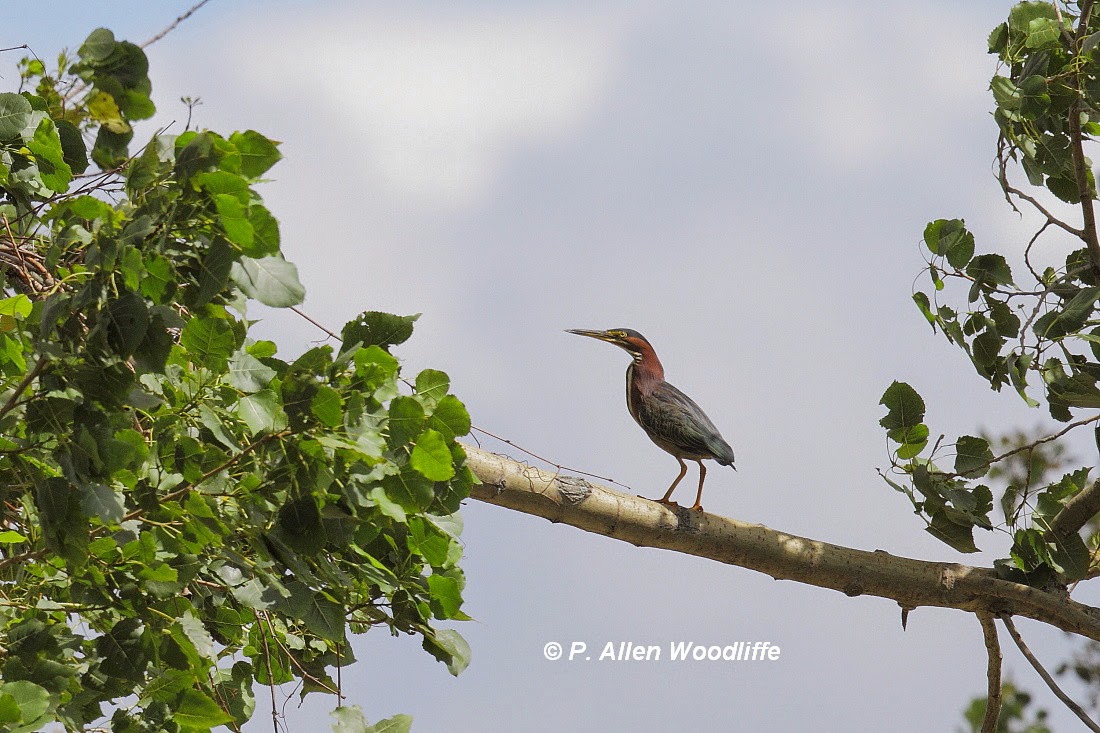I headed to the South Point Trail, thinking that the sunny weather, warm temperatures (which reached ~20C) and brisk southwest winds would have made it conducive to winged critters.
There was some action. But not a lot. It seems like the cooler weather and storm systems not that long ago had convinced many birds to head south. But there were lots of both kinglet species, some American Robins, Blue Jays and Cedar Waxwings, among others. This first image is part of a flock of about 24 Cedar Waxwings, mostly young ones, that were out and about.
This next image was a little surprising. It was at the top of a tall Eastern White Pine tree, feeding on berries along with a half dozen robins. The light was so poor against what now had become a cloudy sky, that it was hard to see much detail other than shape. I thought it might have been a red-wing or even a grackle, but when I got it home, cropped it and adjusted the contrast, it turns out it was a Rusty Blackbird. Normally you see them rummaging through the leaves on the ground in a wet area, not feeding on Virginia Creeper berries 30 metres or more in the air.
Turkey Vultures are going through in large numbers these days, although their main flight path to get out side of Ontario goes north of the park. Nonetheless, there is often a dozen or more that are seen in the skies above the park.
I saw three Eastern Commas as well as one or more Clouded Sulphur and Orange Sulphur butterflies. I also saw quite a few dragonflies. Most seemed to be Autumn Meadowhawks, but there was the occasional darner. However the breeze kept them all on the move, and I never got any photos of them.
This next invertebrate was a lot easier to photograph, as it paused while crossing the trail. It was about as big an example of this species as I recall ever seeing.
 |
| Marbled Orb Weaver |
The leaves are extremely large. Red Mulberries don't often show this much lobing, but certainly can do. And what really is striking about most of the leaves, were the very long drip tips. Those are the long narrow tips of the leaves, which assist in the leaf shedding water to reduce the likelihood of mould.
To give you an idea of just how large these leaves are, I found this average sized one on the ground and put an average sized leaf of a Red Oak on it. The Red Mulberry leaf measures more than 20 cm (12") from the base to the tip.
The Red Mulberry is an endangered species in Canada and Ontario. There are populations at Rondeau, Fish Point Provincial Nature Reserve (on Pelee Island), Point Pelee National Park, and in the Niagara Escarpment area of greater Hamilton, and a very small number elsewhere. It is at the northern extent of its range in southern Ontario. What compounds its chances of survival is that the non-native White Mulberry will hybridize with it, and cause its decline through a process that is known as 'genetic swamping'. One of the management approaches to helping the survival of Red Mulberry is to eliminate as many White Mulberry trees as possible, but given their abundance across the landscape, it is a losing battle. And because the fruits are so delicious, birds such as robins, thrushes, warblers and others, feast on the berries, and when they defecate later, the seeds are transported well away from where they originated.
Speaking of seeds, now is the time to collect the seeds of milkweeds. If you collect them when they are too green, they may not ripen properly. Wait until the seed capsules are fairly dry and start to split, like this one.
Collect the seed pods, and put them in a paper bag to let them dry some more. When they are dry enough, it is easy to pry the seed pod open and then gently remove the brown seeds from the white silky hairs that, if left outside, will act as parachutes and be swept by the wind to far away places.
You can collect them when they have reached this stage as shown in the next image.
However they are much more difficult to remove from the silk, which is so light it will float all over the place even with virtually no wind, so don't do it in the house!
You can plant the seeds immediately, or store them over the winter in a small container such as a paper envelope, Do not put them in an air tight container, or any residual moisture in the seed will likely cause the seeds to get mouldy. Storing the seeds in a cold place, such as an unheated garage, will allow the seeds to experience what is known as 'cold-moist stratification', which is important to cause a greater number of seeds to germinate in the spring.
If you have the time, you can plant the seeds in a small container with potting soil. Plug trays are best, but sometimes things with separate compartments like an egg carton will do. The best time to do it is in the late winter or early spring, so they will have sprouted and developed some root systems and make them easily transplanted to the location you want them to grow.
If you are successful, you may end up with a beautiful display of colourful milkweeds, visited by the beautiful Monarch butterfly, and assist with the recovery of this rare species!
 |
| Monarch visiting Butterfly Milkweed |
 |
| Monarch laying an egg on a Common Milkweed |








%2Bof%2BAsclepias%2Bsyriaca%2C%2BOct%2B'14%2C%2B1arpm.jpg)














%2Bof%2BRondeau%2BRoad%2C%2BOct%2B'14%2C%2B1arpm.jpg)
























